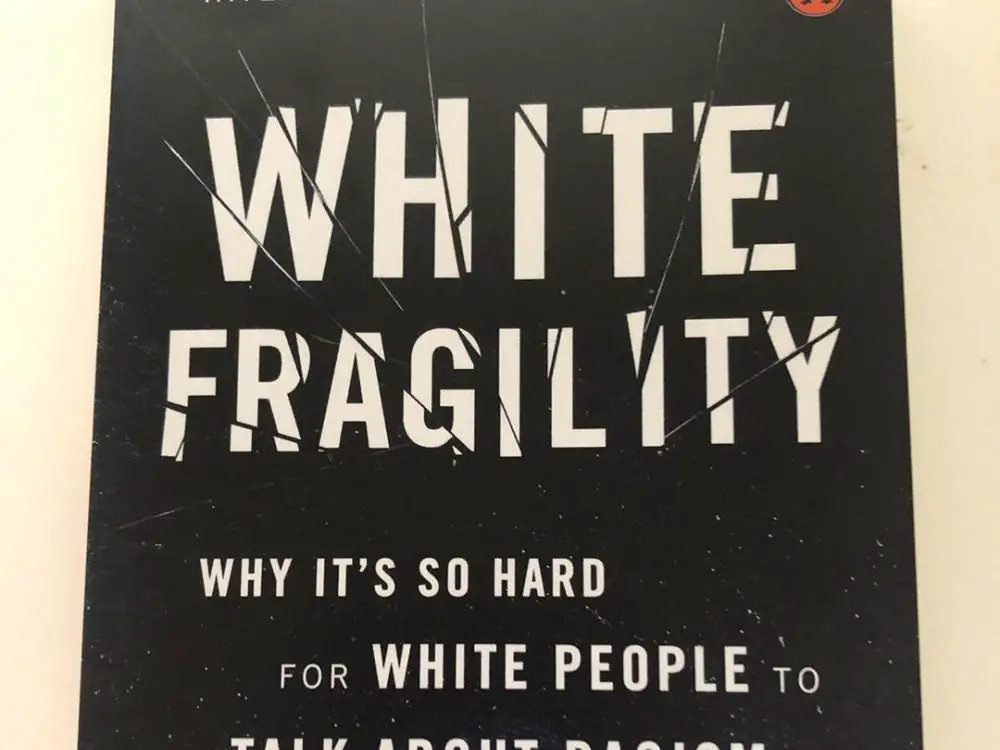Though originally published over two years ago, Robin DiAngelo’s “White Fragility” has caught a historic second wind. The book has become somewhat of a cultural symbol, seen by many as required reading for understanding the political moment. Its perceived importance has made it a fixture on all of the bestseller lists. “White Fragility” took the top spot on USA Today’s bestseller’s list on June 11, unseating the newest “Hunger Games” novel.
The book’s sudden rise to prominence is no enigma. Interest in “White Fragility” has undoubtedly soared as a direct result of the revitalized debate surrounding racial justice in the aftermath of the police murder of George Floyd. Systemic racism has been pushed to the forefront of national discourse, and people are looking for answers.
And “White Fragility” provides some worthwhile insights. There is a lot to like about the book. For one, DiAngelo soundly deconstructs harmful motifs in the narrative of race relations. She brilliantly explains how the false narrative of meritocracy has been used to blame Black people for hardship they face due to systemic racism. Instead of contextualizing struggles, the cult of meritocracy dictates that one’s circumstances are purely a product of personal choices over which the individual has full control. This is obviously false, as everyone is a product of their environment. Indeed, Black achievement cannot be separated from the oppressive structures that continue to hold their community down — everything from redlining to underfunded inner city public schools to unjustifiable sentencing disparities.
DiAngelo also does a good job of explaining race as a social construct. Understanding this can be difficult, as racial conceptions are tied to phenotypic characteristics, leading many to believe that there is an inherent realness to race. But DiAngelo gets the point across well, in part by walking readers through the fluidity of racial categories over time. Much of this history is rather unsavory, but it is important to know.
But such positive contributions might be overshadowed by some of the book’s more troubling themes. Even though she adds nuance to the word, DiAngelo ultimately groups all white people as racist. In DiAngelo’s own words, for whites, “… it is not humanly possible to be free of [racial] prejudice.” This form of essentialism is something DiAngelo preaches throughout the book. But she goes even further. In Chapter 3, titled “Racism After the Civil Rights Movement,” DiAngelo said:
“Of course, some whites explicitly avow racism. We might consider these whites actually more aware of, and honest about, their biases than those of us who consider ourselves open-minded yet who have rarely thought critically about the biases we inevitably hold or how we may be expressing them.”
Here, DiAngelo presents an unfalsifiable hypothesis. Her assertion that every white person is racist if you dig deep enough cannot be deductively disproven. Regardless of how vehemently a person denies the allegation, one can always retort by continuing to insist that they are just unwilling to confront their own subconscious biases. White people, are in effect, blanket-condemned in, arguably, an overly reductive way. Consider the potential implications of such logic.
If white people are racist regardless of what they do, what motivation do they have to participate in anti-racist struggle? Would they not risk poisoning the movement? The narrative DiAngelo is pushing here is dangerous as it effectively invalidates the ideal of racial solidarity. Unity on such precarious terms is a death wish for minorities if the country’s majority is immutably dedicated to their oppression.
DiAngelo espouses this messaging not only in “White Fragility,” but in the many seminars discussing racism she holds across the country. These seminars primarily happen in workplaces, presumably at the behest of management. And anyone familiar with these sorts of workplace diversity trainings knows that employee attendance is almost always mandatory, and those who fail to show up risk getting fired.
The imagery is particularly off-putting: a rich academic scolding people who have to constantly answer to a boss just to put food on the table over their unwillingness to acknowledge the abundance of societal power they supposedly hold. The participants in DiAngelo’s racial awareness seminars exert only minimal control over their own professional lives. The average worker is given only the most basic level of self-determination. Through no fault of their own, their work life instead revolves around taking orders from those above them on the management hierarchy.
As a result, whether consciously or subconsciously, feelings of powerlessness pervade their psyche. And, to add insult to injury, the same boss that exploits them every second they are on the job is now forcing them to attend a seminar wherein they are told they fundamentally harbor a racist mindset, by someone who does not even know them personally. Amazingly, this antagonistic dynamic is something DiAngelo never directly addresses in “White Fragility.”
This is probably the book’s most glaring omission. Indeed, one simply cannot engage in an honest discussion of DiAngelo’s work without taking this context into account. But DiAngelo never even addresses it. Perhaps the aforementioned dynamic has something to do with why some employees come off as defiant toward DiAngelo’s strategies — a phenomenon she dubs “white fragility.”
And, moreover, despite DiAngelo’s experience holding these seminars, it seems lost on her that her job primarily exists to protect corporations from discrimination lawsuits. The average boss could not care less about “workplace diversity” — not because they are bad people, but because they are not made to care. That is not their job, nor is it what the capitalist incentive structure demands. Indeed, the job of a boss is to manage their firm in such a way that maximizes profits — not advance a progressive social agenda.
That does not, however, mean that the two are mutually exclusive. Sometimes they overlap, as seen with the recent promotion of the Black Lives Matter movement by companies like Nike and McDonald’s. But the reason that corporations sometime take stands like this is, first and foremost, because it is good business.
Executives reckon they can expand their consumer base by aligning their enterprise with popular causes, and Black Lives Matter currently has immense levels of public support. To assume they are doing it for the right reasons would be naive. Nike can claim to care about the lives of people of color, but it does not mean that much when they simultaneously subjugate people of color in their Southeast Asian sweatshops.
But white guilt will not be what alleviates the plight of sweatshop workers. Nor will it be what brings an end to systemic racism. These things can only be done by way of a broad-based, multiracial, class politics that centers equity and justice above all else. Unfortunately, it appears that much of what lies at the core of “White Fragility” runs counter to this project.

















